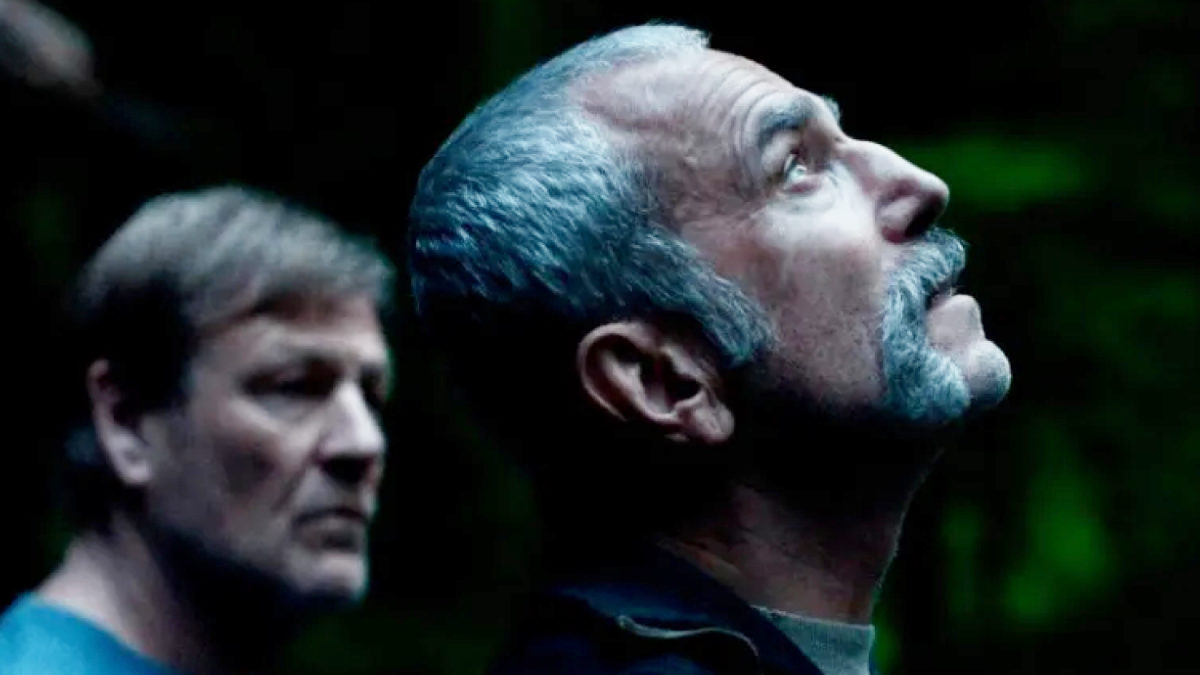Cinema has always thrived on stories that mirror the human heart, its scars, its rage, and its yearning for connection. Anemone, the breathtaking debut feature from Ronan Day-Lewis, is exactly that kind of story. Co-written with his father, three-time Academy Award winner Daniel Day-Lewis, the film is a searing portrait of two estranged brothers who reunite after twenty years apart, forced together by a family crisis that unearths decades of resentment, suppressed memory, and unhealed wounds.
At the center of Anemone are Ray (Daniel Day-Lewis), a self-exiled hermit scraping out a harsh existence deep in the wilderness, and Jem (Sean Bean), a devout man who has sought refuge in faith and family. Their history is marked by violence, strict religiosity, and the lingering shadows of the Troubles in Ireland, where both once served as British soldiers. When Jem finds Ray’s isolated cabin, the reunion is anything but warm. What unfolds is a tense and intimate reckoning between brothers who cannot outrun the past, no matter how hard they try.
The collaboration between father and son brings an authenticity that few films could achieve. Ronan’s painterly sensibilities infuse Anemone with a haunting visual style, windswept landscapes, turbulent skies, and an atmosphere heavy with unspoken truths.
Daniel’s performance, his first in eight years, is nothing short of extraordinary: a ferocious, fragile embodiment of a man consumed by guilt and self-denial. Bean matches him with rare vulnerability, shaping Jem as a man who has chosen resilience, but not without cost.
Supporting performances from Samantha Morton as Nessa, Jem’s partner, and Samuel Bottomley as their son Brian add further depth. Morton, as always, conveys oceans of emotion with minimal words, grounding the story in the quiet but immense strength of those who endure alongside broken men. Rising talents like Safia Oakley-Green inject light and contrast into a film otherwise steeped in shadow.
The production is as meticulous as its storytelling. Shot primarily in Wales, with production design by Chris Oddy and cinematography by Ben Fordesman, Anemone embraces both intimacy and scale. The cabin where much of the film unfolds feels like a character itself, claustrophobic, raw, and brutally authentic. Bobby Krlic’s (The Haxan Cloak) score blends shoegaze, lo-fi textures, and classical strings into a soundscape that is as unsettling as it is transcendent. Together, these elements make Anemone not just a story but an experience that lingers.
At its heart, Anemone is not just about two brothers, it is about the burdens of family, the scars of violence, and the fragile hope of reconciliation. It’s about the ways in which love and rage can live side by side, inseparable and consuming. For Daniel Day-Lewis, this may stand as one of his most haunting performances; for Ronan Day-Lewis, it is a bold declaration of his arrival as a filmmaker with a singular vision.
Anemone is not a film that will comfort you. It is one that will stay with you, demanding reflection long after the credits roll. And that, perhaps, is its greatest triumph.

